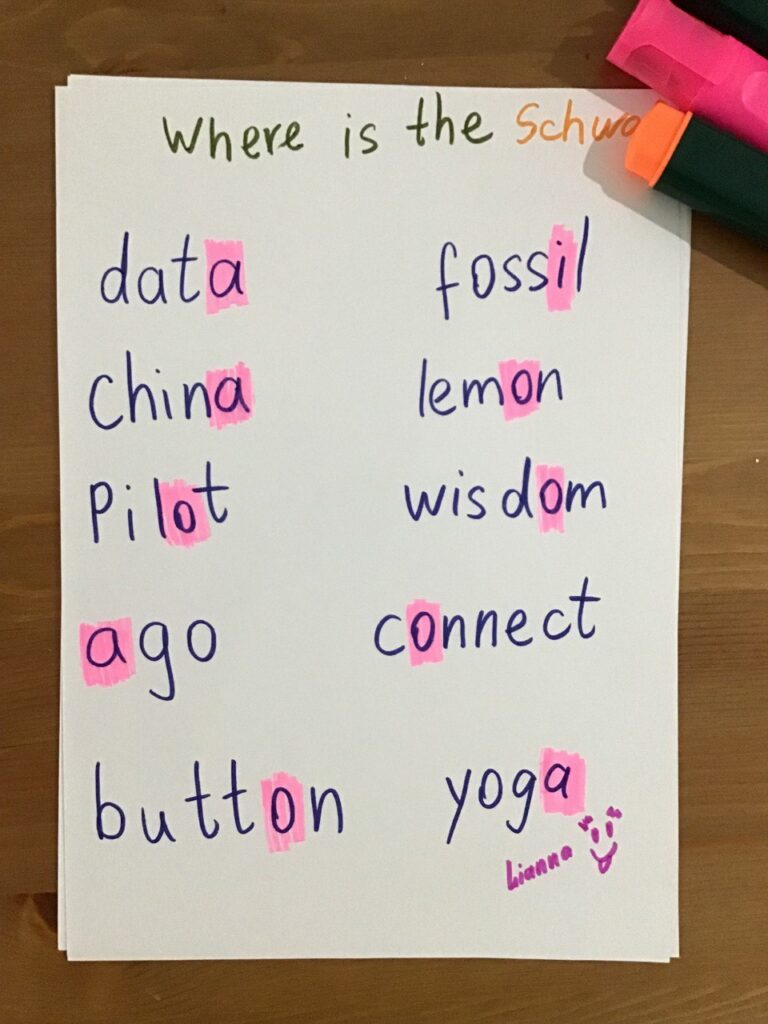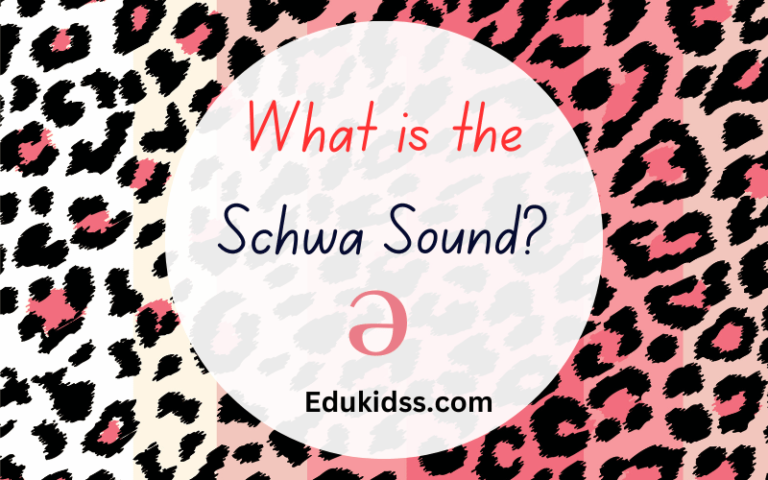Understanding the Schwa Sound
Today, I’m thrilled to shed light on one of the most common vowel sounds in the English language that often goes unnoticed – the schwa! Despite going through high school, college, grad school, and years of teaching, I had never encountered the schwa until recently. In this blog post, I want to demystify the schwa sound and share what I’ve learned with my students to help them navigate the complexities of our tricky language. Although I’m not a linguist, I’m passionate about learning and want to facilitate open and respectful dialogue about this fascinating topic. Before we jump in, I want to introduce our Virtual Segmenting and Blending Boards. You can find them and many other educational games Here
So,
What is the Schwa Sound?
The schwa is a unique sound represented by all the vowels in the International Phonetic Alphabet (IPA). It is often described as a short, lazy, and less pronounced vowel sound, akin to the ‘uh’ sound. Understanding the schwa is essential for English learners and language teachers as it influences the rhythm and stress patterns in spoken English.

Identifying the Schwa:
- Substitution Method: When sounding out a word and uncertain about the vowel, try substituting the vowel with the schwa sound (/uh/). The schwa is commonly found in the second syllable, so start there if unsure.
- Ending with Vowel-N: Words that end with a vowel followed by an ‘n’ often contain a schwa before the ‘n’. For instance, ‘sofa’ and ‘comma’ both have a schwa sound before the ‘n’.
- High-Frequency Words: Common words like ‘ago,’ ‘again,’ ‘about,’ ‘away,’ and others with an initial ‘a’ followed by an open syllable often have a schwa sound.
- Vowel + L: Words ending with a vowel followed by an ‘l’ often include a schwa before the ‘l’. For example, ‘camel’ and ‘pencil’ have a schwa sound before the ‘l’.

Spelling the Schwa:
Unfortunately, spelling the schwa sound can be challenging. It is not predictable through phonetic rules alone, and spell checkers are often essential for accuracy. Dyslexic learners can benefit significantly from spell checkers as they actively use phonics and morphology to approximate the correct spelling.
Activities for Practicing the Schwa:
- Picture Cards: Use picture cards with written words to introduce the schwa. Identify the vowel that appears out of place and explain the concept of the schwa.
- Word Building: Utilize letter tiles to practice syllable division rules and identify the schwa in 2-syllable words. Label the vowels with short or long symbols and highlight the schwa for correct pronunciation.
- Sorting Activities: Sort picture cards and word cards to identify common places where the schwa appears, such as before the letter ‘n’ or in high-frequency words.
Conclusion:
Understanding the schwa sound is an essential aspect of mastering English pronunciation and comprehension. While the schwa may seem elusive at first, consistent practice and exposure to common patterns can improve recognition and usage of this prevalent vowel sound. Embrace the complexities of language, and remember that learning is a continuous journey filled with opportunities for growth and understanding.
Great Partners:
Syllable Division Rules. All You Need To Know
How To Teach Two Syllable Words

